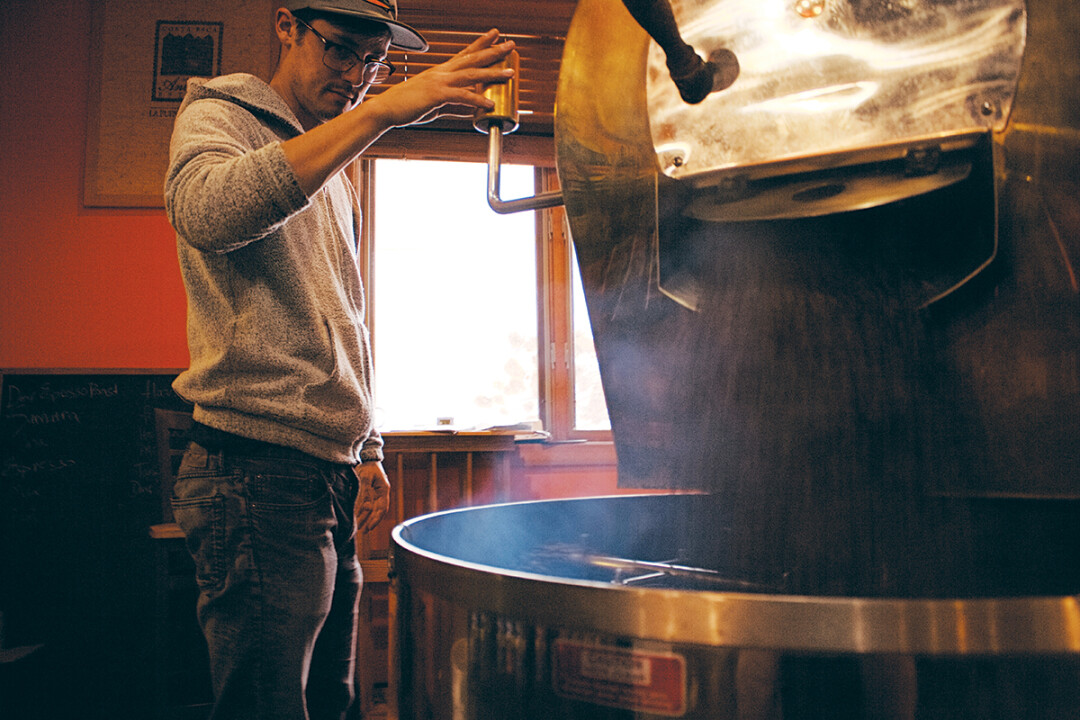6 Coffee Tricks for Doing Your Best Buying and Brewing
photos by Madisyn Kephart

My obsession with coffee started seven years ago, while I was working at the local teahouse, Infinitea. I discovered that much like tea, coffee from different parts of the world has dramatically different flavor qualities. My interest was further expanded when I discovered that the way a shop roasts the coffee can change which flavors are highlighted. To explore these flavor and roast differences, my friends and I started the Eau Claire Coffee Club in the summer of 2014. The Coffee Club has been a great way to explore different roasters around the country, sample unique coffees, and discuss methods for brewing coffee at home. Here are a couple tips to help you improve your coffee brewing at home, which can make your morning routine more cost effective, more enjoyable, and exciting.
1. Buy Fresh Coffee
Freshly roasted coffee usually has more potent, rich flavor. After coffee is processed and shipped to Wisconsin, it arrives as a green bean, and it is the job of the roaster to roast the coffee to a point where it releases its maximum flavor potential. As the coffee rests, it slowly loses aromatics and flavor, and begins to taste stale. When you buy fresh coffee from local roasters, you really only want to keep the coffee for no more than 3-4 weeks after its roast date.
2. Storage
Try to keep coffee away from sunlight and in an airtight container. Most coffee bags today come with a plastic roll tie on the top to decrease the amount of air interacting with the coffee as it sits in your cupboard. This helps to keep those delicious coffee flavors in the beans longer. Often, using a screw-top jar or sealable container helps to keep air out the best. Sunlight will dry out the beans or could add some funky undesirable qualities.
3. Grind before you Brew
When we grind coffee, we are breaking the bean down into particles so that water can extract the flavors from the roasted bean. When you buy ground coffee in the store, it is likely to go bad sooner. When grinding, it is important to grind the coffee as uniformly as possible to get an accurate and evenly distributed extraction. The best grinder to use is a Burr Grinder, which smashes the bean at a consistent adjustable level depending on the coffee brewing method.
4. Coffee Geography
Coffee can taste dramatically different depending on where it is grown, how it is processed, the variety of the coffee plant and the plant’s elevation, humidity, and soil content. Coffees from Central and South America will often taste chocolaty and nutty, African Coffees will taste fruity and bright, and South Pacific coffees taste earthy and savory. Having knowledge of these differences will help to inform your purchases at the store or online.
5. Accuracy
Making coffee involves a good amount of math. Without getting too into the specifics of extraction ratios, it is important to know that different brewing methods require varying ratios of ground coffee to brewing water. One simple rule is try to stay consistent with the amount of coffee grounds and water used each morning, I use a kitchen scale to accurately measure the weight of the coffee, but simply using a specific tablespoon or scoop each morning will help to streamline the brewing process.
6. Manual Brewing Methods
Try incorporating a manual brewing method such as french press, the moka pot, or a pour over into your home coffee routine. All three of these methods are fairly inexpensive and can drastically improve the flavor quality of your coffee. The french press can highlight the rich body of a coffee, the moka pot makes an intense espresso-like coffee, and the pour over usually brings out a cleaner and fruitier cup. Try pairing these brewing methods with coffees from around the world!

